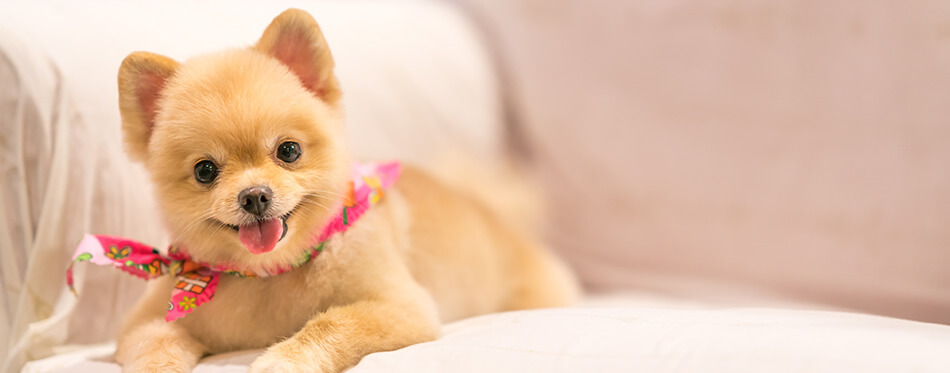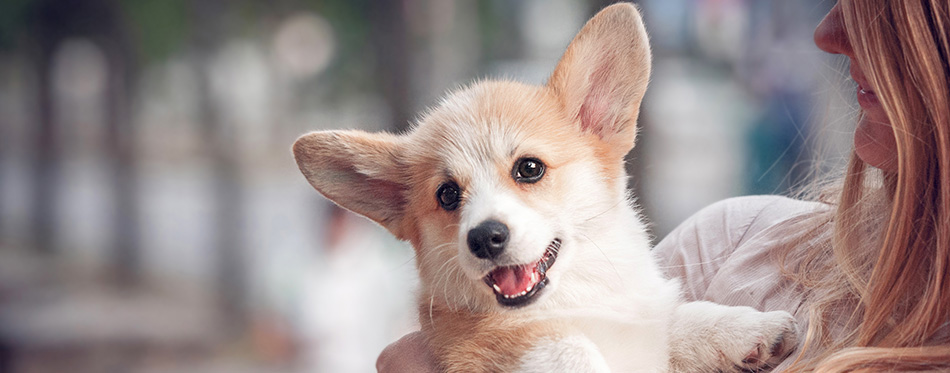Hair or fur – these are the two ways to describe your dog’s coat. And while they may seem to be interchangeable terms, they are not actually the same. While dog fur and hair are both made from keratin, they have different textures and growth cycles, to create the distinct look that sets your pooch’s breed apart.
With the American Kennel Club recognizing 36 breeds that officially have hair instead of fur, we step into the dog coat discussion and ask: is there a difference between dog hair and dog fur?
Dog Hair vs Dog Fur
Looking at their chemical composition and the fact that they both grow out of the same type of hair follicle, dog hair and fur are technically the same. They share the component, keratin which can also be found in a dog’s skin and nails and are pretty much genetically identical. However, they do have their differences, which are immediately identifiable when it comes to your dog’s appearance as well as their grooming needs.
At a basic level, dog hair is longer and thicker yet less dense than fur, which tends to shorter, finer and often comes with a double coat. But there is much more going on behind the scenes in the difference between fur and hair debate.

What is the Difference Between Dog Hair and Fur?
Dig a little deeper and you can get to the root of issue and understand the two main ways dog fur and hair can be considered different.
Texture
Gently stroke your dog and the texture of their coat will become apparent. Not all dog coats feel the same and this can help you to distinguish whether they have fur or hair.
Dog hair is typically longer than fur and will feel finer and smoother. But hair is not always straight, as it can grow to be curly or wavy. Another distinguishing feature of dog hair is that it only has one layer and so will feel the same, whether on the coat surface or close to the skin.
A specific trait of pet hair is that the long strands, particularly wavy or curly dog hair, can trap loose hair and dander, which will need regular grooming to remove.
Dog fur, on the other hand, will not only be much shorter but also denser, as it has more follicles per inch of skin than dog hair. A dog fur coat also features two layers – a softer undercoat as well as a coarser topcoat – which not only helps them to regulate their temperature but increases the amount of fur your pet appears to be shedding.
Hair and Fur Growth Cycle
The most significant difference between hair and fur is how each one grows – in short, the growth cycle and rate of shedding. As dog hair has to grow to a longer length, its growth cycle is slower than fur, and so will see less frequent shedding. But to really answer the question, what is the difference between dog hair and dog fur, we need to look more closely at each phase of the growth cycle.
Both hair and fur grow in four distinct phases:
Phase one: Anagen
The start of the growth cycle, the anagen phase sees the follicle become active and starts growing.
Phase two: Catagen
Also known as the transitory phase, catagen sees the sheath of the root attach to the fully grown hair, pausing any further growth.
Phase three: Telogen
In the telogen phase, the hair or fur is inert, ie. it doesn’t grow but becomes dormant. Known as the resting phase the hair remains attached to your dog.
Phase four: Exogen
The final phase sees the follicle release the hair, which then starts to fall off as part of the natural shedding process, ready to make space for new hair or fur to grow. The exogen phase tends to be faster in the summer months to get rid of the old winter coat.
So, while we know both fur and hair share exactly the same growth cycle, it is the speed at which they go through the process and each phase that really sets them apart.
Dog hair will go through a much longer anagen (growing) phase and will therefore shed less as the whole cycle has been prolonged. Dog fur, meanwhile, will only grow to a limited length before shedding and so will tend to reach the catagen, telogen and ultimately exogen much quicker, meaning they will shed more frequently.
Is Dog Hair More Hypoallergenic?
If dog hair has a longer anagen hair growth cycle, then it could be said that pooches with hair will shed less than dogs with fur and so reduce the chance of causing related allergies in their pet owners. But it is not quite as simple as that.
Neither fur nor hair are actual allergens; it is what they may carry that can trigger allergic reactions. Certain proteins, as well as compounds from your dog’s skin cells and saliva, are the culprits, and these can be caught up on their hair or fur, which then carries them when shed. This is known as dander and is the main reason why people develop allergies when around dogs or dog hair/fur.
If your dog has fur – ie. a shorter coat that is more frequently or even constantly shed – then it is fair to say that the allergy-causing dander can be more prevalent around your home and so potentially trigger more reactions. But dander is carried by both pet hair and fur, so where there is a dog that is shedding, then those potential allergens will be present.
Some dog breeds or dogs with certain ‘low shed’ coat types can be considered ‘hypoallergenic’, in the way that their coat traps and retains dander and so minimizes, to some extent, the number of allergens that are dispersed into the home environment. And dogs with long, curly hair are amongst the types of dogs that can help people who suffer from allergies. But the truth is, no dog is truly hypoallergenic.
Popular Breeds With Hair, NOT Fur
Hair or fur, it is not a random occurrence in the canine world but is actually breed specific. And, according to the American Kennel Club, there are a total of 36 known dog breeds that have hair instead of fur. And while you would expect all these breeds to have long, luscious and flowing hair, the number also includes a couple of breeds, including the Brussels Griffon, that actually present as hairless.
Some of the most popular hair breeds include large dogs such as the Giant Schnauzer, Afghan Hound and the Poodle. While the medium breed category has the most dogs with hair, including the Miniature Poodle, the Bedlington Terrier, Wirehaired Fox Terrier and the Kerry Blue.
And if you are looking for a small dog hair breed, the best known are the Yorkshire Terrier, Shih-Tzu, Pomeranian, Bichon Frise and the Maltese.

Hair or Fur – The Final Word
So, there you have it, dog hair and fur are fundamentally the same, but exhibit different traits when it comes to texture, length and growth patterns. And these differences can help you make a final choice of the breed of dog you want.
A dog breed with hair may be a good choice if you want a pooch that sheds less frequently, but it doesn’t guarantee they will be hypoallergenic. And you will still need to be meticulous when it comes to a regular grooming routine to keep your pooch’s coat happy and in good health.
At the end of the day, it all boils down to personal preference and so, whether you opt for hair or fur, you will still have a gorgeous canine best friend that you can pet, love and cuddle.
Source:
- LARA SYPNIEWSKI, Dr. Cherie Pucheu-Haston Dog Hair or Dog Fur: Is There a Difference? – PawCulture

